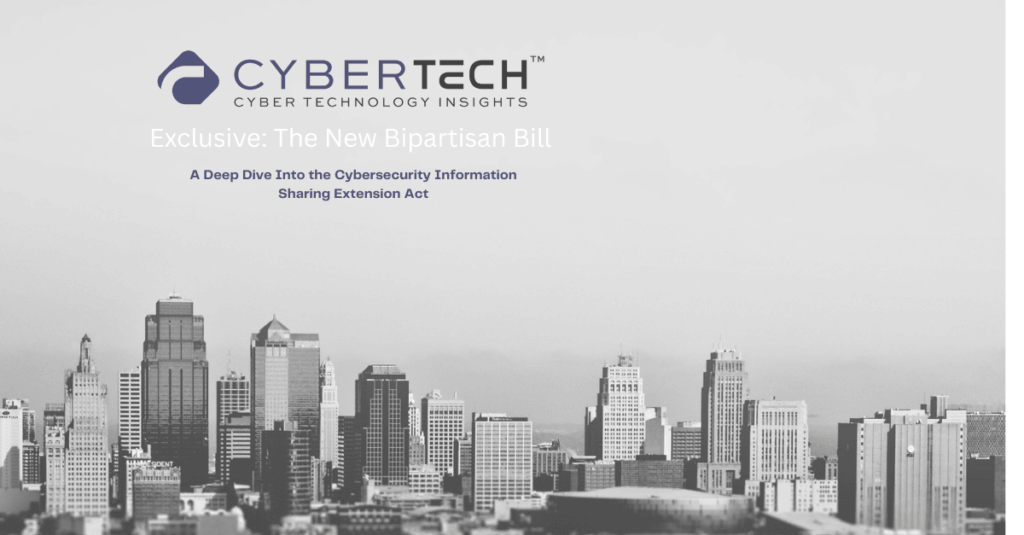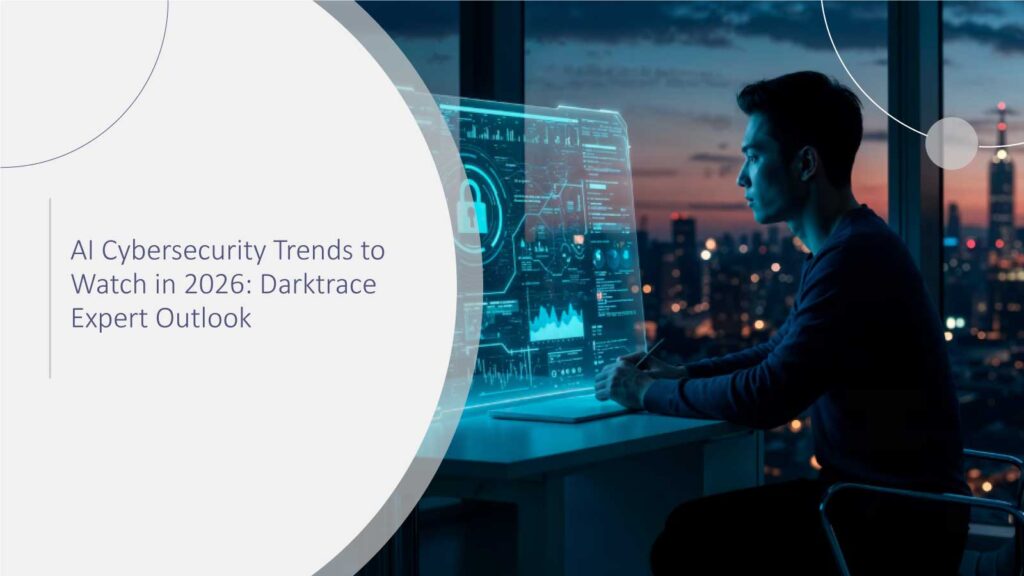In an era where cyber threats evolve faster than many organizations can respond, a recent move by U.S. Senators Gary Peters (D-MI) and Mike Rounds (R-SD) is sending a strong signal to the cybersecurity industry: collaboration remains our most effective defense. Their newly introduced bipartisan legislation—the Cybersecurity Information Sharing Extension Act—aims to extend key provisions of the Cybersecurity Information Sharing Act (CISA) of 2015 for another ten years. And for cybersecurity professionals, vendors, and critical infrastructure providers, this move could have far-reaching implications.
Recommended CyberTech Insights: How Darktrace is Transforming AI in Cybersecurity: A Deep Dive Into Cyber AI Analyst and Beyond
Why This Legislation Matters Now More Than Ever
Since the original bill’s passage in 2015, the threat landscape has grown significantly more complex. From state-sponsored campaigns to highly coordinated ransomware attacks, the adversaries targeting U.S. networks are relentless and well-resourced. The original legislation played a vital role in building a bridge between the public and private sectors—particularly by offering liability protections to companies that shared threat intelligence.
Without this legal shield, many organizations would be hesitant to share critical information about cyber threats or breaches for fear of regulatory penalties or lawsuits. The proposed extension ensures that this line of communication remains open and protected, at a time when cyber threats are only becoming more sophisticated.
April Lenhard, Principal Product Manager at Qualys spoke to our CyberTech analysts to explain the scenario for the cybertech audience.
April said, “Reauthorizing the Cybersecurity Information Sharing Act (CISA) isn’t just a bureaucratic box-check—it’s about keeping the digital lines of communication open between the private sector and government. CISA has been instrumental in streamlining information flows that strengthen national cybersecurity defenses. Renewing CISA for another decade will preserve the continuity of critical threat intelligence exchanges within the private sector and between private entities and the federal government.”
April added, “CISA’s bipartisan support underscores how a voluntary and collaborative information sharing framework remains a robust tool for collectively defending against evolving cyber threats. Recent developments—such as the near-expiration of MITRE’s CVE program—highlight the complex interdependence between public and private sectors in both network defense and intelligence contribution: the entire threat intelligence ecosystem feels the ripple.”
Key Provisions and Their Significance
The new bill keeps the heart of the original CISA legislation intact, ensuring that companies can continue to voluntarily share:
- Indicators of compromise (IOCs)
- Software vulnerabilities
- Malicious IP addresses and domain names
- Malware signatures
- Other threat intelligence relevant to national and corporate security
Here’s why this matters:
- Legal Protections Remain in Place
The liability shield is perhaps the most important piece. Without it, companies might avoid reporting vulnerabilities or attacks, leading to blind spots in our national cyber defense posture. - Preservation of Privacy Protections
The bill maintains provisions that protect personally identifiable information (PII) from being included in threat-sharing reports—addressing a major concern from privacy advocates and ensuring compliance with federal privacy guidelines. - Continued Support from CISA and ISACs
Shared threat data will continue to flow through trusted channels like the Cybersecurity and Infrastructure Security Agency’s (CISA) Joint Cyber Defense Collaborative (JCDC) and Information Sharing and Analysis Centers (ISACs). These entities help translate shared intelligence into actionable defenses across sectors—from energy and finance to healthcare and education.
Real-World Impacts: From SolarWinds to Volt Typhoon
Over the past decade, this framework has helped address some of the most high-profile and damaging cyberattacks, including:
- The SolarWinds breach, where a compromised software update exposed countless federal and corporate networks.
- Volt Typhoon and Salt Typhoon, which highlighted the growing threat posed by nation-state actors and their persistence in infiltrating U.S. infrastructure.
Casey Ellis, Founder at Bugcrowd, a San Francisco, Calif.-based leader in crowdsourced cybersecurity said, “Cybersecurity is a team sport, and the truth of this idea is only becoming more obvious in a progressively more hostile global environment. The Cybersecurity Information Sharing Act provides a safe framework for information sharing, and underpins both public/private partnership sharing and the “in community” sharing that powers US-based ISACs. I’m very glad to see Senator Rounds and Senator Peters moving this along.”
Chad Cragle, CISO at Deepwatch, a San Francisco, Calif.-based AI+Human Cyber Resilience Platform, said, “From a defender’s standpoint, the Cybersecurity Information Sharing Act has been one of the few legislative tools that truly moved the needle. It gave the industry the legal clarity to share threat intel quickly, directly, and without second-guessing the lawyers. Programs like JCDC have only amplified that value, allowing us to work shoulder-to-shoulder with the government in an operational, rather than just performative, way. If the law is allowed to lapse, it reintroduces hesitation at the wrong time. Threat actors aren’t slowing down—and we can’t afford to either.At the same time, a renewal shouldn’t simply be a rubber stamp.”
Chad added, “The threat landscape has evolved significantly over the past decade, as have the risks associated with data handling and cross-sector coordination. This is an opportunity to fine-tune the law, preserving its core strength while ensuring it reflects today’s privacy expectations, supply chain realities, and operational complexity. Getting this right means building on what works while adapting to what has changed.”
By allowing rapid information dissemination about these threats, the current framework has enabled faster detection, patching, and coordinated response efforts. Extending the legislation ensures that future operations are not left vulnerable by legislative gaps.
What This Means for Businesses and Cybersecurity Providers
If you’re in the business of defending networks—whether as a CISO, MSSP, cybersecurity vendor, or IT leader—this bill is a clear call to action:
- Information Sharing Is Here to Stay
It’s not just encouraged—it’s becoming a core pillar of national defense. Organizations that embrace this and build sharing into their operational workflows will be more resilient and better positioned to contribute to collective defense. - Liability Protection Empowers Transparency
Companies can be more open about vulnerabilities and incidents without fear of retribution. This transparency accelerates detection and mitigation across industries. - Threat Intelligence Will Become More Central to Strategy
With an established and protected channel for intelligence sharing, we can expect to see a surge in collaborative cyber defense strategies. Private companies and public agencies alike will increasingly lean on threat data to inform security investments, incident response plans, and strategic roadmaps.
Looking Ahead: Strengthening the Ecosystem
The bill is more than just a legal update—it’s a reaffirmation of a fundamental cybersecurity principle: no one wins alone. The interconnected nature of today’s digital ecosystem means that a vulnerability in one company’s system can quickly become a national risk.
By extending the Cybersecurity Information Sharing Act’s protections, Senators Peters and Rounds are helping secure not just federal networks, but the entire business ecosystem. And they’re doing so with bipartisan support—something that, in today’s political landscape, is both rare and deeply reassuring.
Final Thoughts
For cybersecurity professionals, the message is clear: collaboration and transparency are no longer optional—they’re mission-critical.
As the industry continues to evolve and threats grow more advanced, the importance of shared intelligence, public-private partnerships, and legal protections will only increase. The extension of this legislation not only provides stability and continuity but also signals the federal government’s long-term commitment to working alongside the private sector in the fight against cyber threats.
The cybersecurity community should welcome this bill—not just as a legal safeguard, but as a strategic enabler in our ongoing effort to stay one step ahead of those who seek to do harm.
Cyber Technology Insights : VPN.com CEO Michael Gargiulo Shares Why His Domain Name Broker Was the Best Investment Ever
To participate in our interviews, please write to our CyberTech Media Room at sudipto@intentamplify.com








